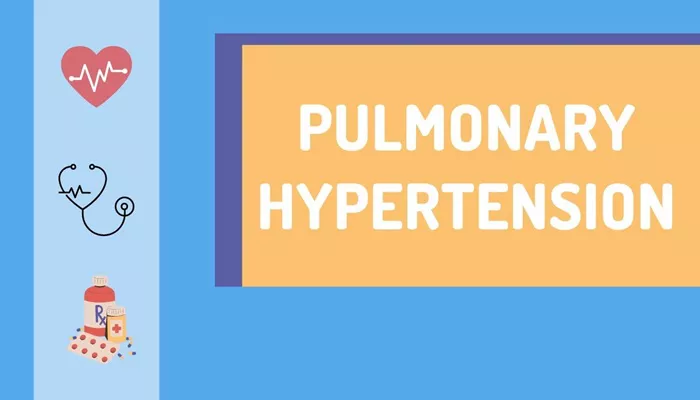Autism Spectrum Disorder (ASD) is a complex neurodevelopmental condition characterized by challenges in social interaction, communication, and behavior. While its primary symptoms revolve around neurological and behavioral aspects, emerging research suggests a link between ASD and various physical health conditions, including pulmonary hypertension.
This article explores the mechanisms through which ASD may contribute to the development of pulmonary hypertension, the implications for affected individuals, and the potential approaches for managing this comorbidity.
Understanding Autism Spectrum Disorder
Autism Spectrum Disorder encompasses a range of conditions characterized by difficulties in communication, social interaction, and repetitive behaviors. The severity and presentation of these symptoms can vary widely among individuals, making ASD a diverse and multifaceted disorder. Although the exact causes of ASD remain unclear, it is believed to arise from a combination of genetic and environmental factors.
SEE ALSO: How Does Hypertension Cause Proteinuria?
What Is Pulmonary Hypertension?
Pulmonary hypertension (PH) is a condition defined by elevated blood pressure in the pulmonary arteries, which carry blood from the heart to the lungs. This increased pressure can lead to symptoms such as shortness of breath, fatigue, and dizziness, and if left untreated, can result in serious complications, including heart failure. PH can be classified into several types, with primary pulmonary hypertension (PPH) and secondary pulmonary hypertension being the most common categories. Secondary PH arises as a complication of other underlying conditions, such as heart disease, lung disease, or chronic hypoxia.
The Potential Link Between ASD And Pulmonary Hypertension
The association between ASD and pulmonary hypertension is not yet fully understood, but several potential mechanisms have been proposed. These mechanisms primarily involve the interplay between ASD-related physiological changes and factors that can contribute to the development of PH. Below are some key factors that may link ASD with pulmonary hypertension:
1. Genetic and Biological Factors
Genetic predisposition plays a crucial role in both ASD and pulmonary hypertension. Certain genetic mutations associated with ASD may also affect cardiovascular function and increase susceptibility to pulmonary hypertension. For instance, mutations in genes involved in vascular development and regulation could impact both neurological and cardiovascular systems, potentially leading to PH.
Additionally, research has identified specific genetic syndromes, such as Down syndrome and Turner syndrome, that are associated with both ASD and PH. Individuals with these genetic conditions may have a higher risk of developing both ASD and pulmonary hypertension due to shared genetic pathways.
2. Autonomic Dysfunction
Autonomic dysfunction, characterized by impaired regulation of the autonomic nervous system, is a common feature in individuals with ASD. This dysfunction can affect various physiological processes, including cardiovascular regulation.
Abnormal autonomic regulation can lead to altered blood flow, increased vascular resistance, and ultimately, pulmonary hypertension.
In individuals with ASD, autonomic dysregulation may result in an imbalance between sympathetic and parasympathetic nervous system activity, contributing to elevated pulmonary artery pressure. This dysregulation can be exacerbated by stress, anxiety, or other factors commonly experienced by individuals with ASD.
3. Hypoxia and Respiratory Complications
Hypoxia, or low oxygen levels in the blood, is known to be a significant contributor to pulmonary hypertension. Individuals with ASD may be at risk of respiratory issues, such as obstructive sleep apnea or other conditions that can lead to intermittent hypoxia. Chronic hypoxia from these conditions can stimulate the pulmonary arteries to constrict, increasing blood pressure in the lungs and leading to pulmonary hypertension.
Moreover, some individuals with ASD may have difficulties with breathing regulation or may exhibit abnormal respiratory patterns, further contributing to the risk of hypoxia and subsequent development of pulmonary hypertension.
4. Comorbid Conditions
Many individuals with ASD have comorbid conditions that can affect cardiovascular health. For example, gastrointestinal disorders, metabolic syndrome, and other health issues commonly observed in individuals with ASD can contribute to the development of pulmonary hypertension. Conditions such as obesity and diabetes, which are more prevalent in some individuals with ASD, can exacerbate cardiovascular problems and increase the risk of PH.
5. Inflammation and Immune System Abnormalities
Chronic inflammation and immune system abnormalities are observed in various neurodevelopmental and cardiovascular disorders. In individuals with ASD, elevated levels of inflammatory markers and immune dysfunction have been reported.
Inflammation can damage blood vessels and disrupt normal vascular function, potentially leading to increased pulmonary artery pressure and the development of pulmonary hypertension.
Diagnosis And Management
Diagnosing pulmonary hypertension in individuals with ASD requires a comprehensive approach, including clinical evaluation, imaging studies, and hemodynamic assessments. Common diagnostic tools include echocardiography, right heart catheterization, and pulmonary function tests.
Management of pulmonary hypertension in individuals with ASD involves addressing both the underlying condition and the symptoms of PH. Treatment strategies may include:
Medication: Various medications, such as endothelin receptor antagonists, phosphodiesterase-5 inhibitors, and prostacyclin analogs, can help reduce pulmonary artery pressure and improve symptoms.
Oxygen Therapy: Supplemental oxygen may be prescribed to manage hypoxia and improve oxygenation.
Lifestyle Modifications: Managing comorbid conditions, maintaining a healthy weight, and engaging in regular physical activity can help reduce the risk of worsening pulmonary hypertension.
Multidisciplinary Care: Collaboration between cardiologists, pulmonologists, and specialists in ASD is essential for providing comprehensive care and addressing the complex needs of affected individuals.
Conclusion
The connection between Autism Spectrum Disorder and pulmonary hypertension represents a complex interplay of genetic, physiological, and environmental factors. Understanding how ASD may contribute to the development of PH is crucial for improving diagnostic and treatment strategies. By addressing the underlying mechanisms and providing targeted interventions, healthcare providers can better manage the health of individuals with ASD and reduce the impact of pulmonary hypertension on their overall well-being.

